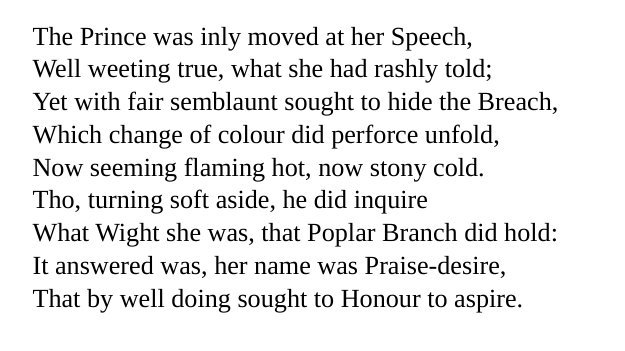So two weeks ago when I visited the @NPGLondon #PreRaphSisters show with the @ArtHistoryYork MAs and Prof. Prettejohn, we noticed that the label for Marie Spartali& #39;s "The Lady Prays-Desire" commented that "the quotation on the scroll is still to be deciphered." 1/
The watercolour painting of a woman with red hair, laurel leaves, and & #39;Renaissance& #39; attire, which is also in the background of the Ford Madox Brown portrait of Spartali in the exhibition, shows the Lady Prays-Desire from Edmund Spenser& #39;s The Faerie Queene: 2/
The label and catalogue suggest its "naive Pre-Raphaelite quality," subverts the usual focus on beauty, instead "personifying not beauty but ambition" (159), while "Renown is also referenced by the owl of Minerva/Athena in the cartouche" as well as Spartali& #39;s Greek heritage 3/
That the inscription, not a quote, is in Greek--ancient Greek, at that--is unmentioned. It is only & #39;undeciphered,& #39; presented as a mystery or a riddle. It& #39;s not. In fact, the first word is clearly ΣοΦία, or Sofia-- Wisdom, clearly referencing Athena& #39;s owl in the cartouche 4/
The second word, σπαρτίον, transliterates as & #39;spartíon& #39; and is clearly a reference to her last name, Spartali, but has numerous different interpretations: Spartan, like the city-state, or Spartium, or a small cord. Tricky, but not impossible, and clearly some kind of pun! 5/
The final word is the difficult one: it looks like υρατει, but by asking someone who speaks Greek, @ArtHistoryYork PhD Kyveli Lignou-Tsamantani, we sorted it out--it& #39;s κρατει, & #39;holds.& #39; In about 3 minutes, by asking and a bit of judicious googling plant names, we had it 6/
It& #39;s simultaneously a literal say what you see, and a clever pun: Wisdom holds the Spartium. Wisdom in the figure of Athena& #39;s owl grasps a branch of Spartium, or Spanish Broom, also known as weaver& #39;s broom, Spartium junceum, common throughout the Mediterranean 7/
Not only is Athena the goddess of wisdom, but also of skilled work like weaving, primarily done by women. Spartali, like the Lady Prays(Praise)-Desire, "That by well doing sought to Honour to aspire" through her skilled artistic production. 8/
While, to be fair, the inscription was Greek to me (pun intended), it wasn& #39;t difficult to enlist help from fellow academics to work out the three words and apply some basic art historical, classical receptions knowledge to Spartali& #39;s work, and to recognise its sophistication 9/
A woman& #39;s use of ancient Greek at the time--even a Greek woman& #39;s use-- was not uncontested. See, for example Yopie Prins& #39; Ladies Greek (Princeton UP, 2017), which takes its title from E Barrett Browning& #39;s comment about & #39;ladies& #39; Greek, without the accents& #39; 10/
Why am I so frustrated by this issue? In this day and age, it& #39;s so easy to reach out and find experts, assistance, and clarification on something like this, which demonstrates Spartali& #39;s sophistication, education, artistic intention, and conscious self-fashioning in her work 11/
Instead, the focus has CONSTANTLY returned to the primacy of the men and the performance of traditionally & #39;feminine& #39; & #39;virtues& #39; of gentleness or prettiness, of the artist as sitter to a man and in her work. 12/
It& #39;s aggravating as a feminist, to see such a major exhibition in 2019 not engaging seriously with the works of art except as illustrations of mere prettiness or images of a woman& #39;s relationship (usually sexual/romantic) to a more important man. 13/
Spartali made a direct link between herself (σπαρτίον, spartíon, Spartali) and ΣοΦία, Athena, the goddess of wisdom, the arts--and war. It& #39;s not a general connection to her Greek heritage, but specific and loaded with historic precedents, both gendered and not. 14/
It& #39;s time to do better by historic women artists, and give them the intellectual credit for their work #PreRaphSisters @NPGLondon 15/15
With credit to the self-identified sisterhood of travelling art historians and classicists for their assistance and input on this material, @smeadleonard @RigantonaE @tinyhistorian @MarteStinis @Freya_Gowrley @MaddyPelling

 Read on Twitter
Read on Twitter





